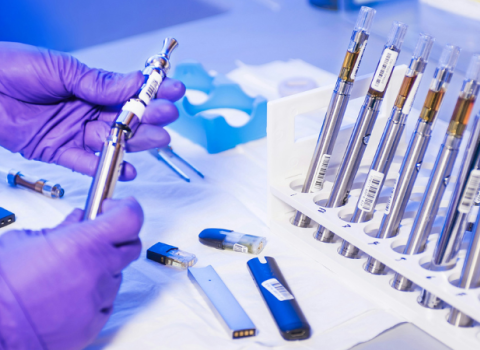
Now the pharmaceutical industry – roundly criticised when debt was cheap for not borrowing to expand – suddenly finds itself in a position of strength.
Pharmaceutical companies stayed out of the cheap debt game and as a result the credit crunch will actually play out as a net positive for an industry much in need of good news, according to Chris Phelps, head of company analysis at the market research company, Datamonitor.
This financial superiority will shift the balance of power in pharma:biotech relationships. “Pharma companies are not only expected to weather the financial storm successfully but to also use this period to exploit their unique cash strength by embarking on an acquisition spree,” Phelps says in a report published last week
Negative issues already priced into pharma valuations
Until very recently, the pharma industry’s stock market performance has faltered compared with other sectors. The reasons for this are well known and deep seated. At its most fundamental level, the industry as a whole has failed to discover and develop sufficient numbers of high-value and innovative products to replace the drugs facing patent expiry to maintain historical growth rates.
Many companies are facing unprecedented losses of drug sales to generic competition over the coming years, with Datamonitor forecasting that between 2007 and 2012, the top 50 pharma companies will face patent expiries on drugs worth $115 billion.
Adding to the pain has been a slow-down in new approvals. In 2007 the FDA approved just 19 new products; the lowest level for over 20 years.
At the same time, the cost of developing innovative therapies keeps rising, and now stands at an average of $800 million per drug, 15 times as high as the 1970s and more than three times as high as in the 1980s.
“This lack of true innovation, coupled with recently increased regulatory scrutiny and tougher cost-containment measures from payers to drive down prices, has made the healthcare environment more difficult to operate in than it has ever been before,” said Phelps.
But the list of woes is well rehearsed, and this array of negative long-term pressures was factored into pharmaceutical companies’ share prices before the credit crunch hit. Between January 2007 and May 2008, the Dow Jones US Pharmaceutical Index fell by 10 per cent, while the Dow Jones Industrial Average was broadly unchanged.
Cash rich, pharma has not taken on significant debt
Average net debt as a proportion of capital employed for the top 20 pharmaceutical companies is just 6 per cent. This compares with the average net debt carried by financial institutions of 95 per cent. This alone suggests that the fallout from the credit crisis will not be as significant in the pharmaceutical industry as in other more highly leveraged sectors.
When this is combined with the fact that the average top 20 pharma company has access to $7.5 billion in cash, equivalents and short-term investments, the ability of large pharma companies to weather the credit storm is very clear.
The markets have recognised the balance sheet strength of pharma in the midst of the credit crunch and as a result, there has recently been a reversal in stock market fortunes. From the end of June 2008 until the end of September 2008, the Dow Jones US Pharmaceutical Index has risen by two percent while the Dow Jones Industrial Average has fallen five percent. The major market declines of early October have seen a continuation of this theme, with pharma stocks outperforming the general indices.
The pharma-biotech relationship: the balance of power shifts
While the credit crunch promises to strengthen the hand of large pharma, the outlook is far from positive for small biotech players. Over the last decade, the pharma industry has increasingly looked to its cousins in the biotechnology sector to help replenish its dwindling product pipelines. There was a symbiotic relationship established whereby biotechnology companies provided innovative therapies and in return, pharmaceutical companies brought funding and development know-how. A natural balance was established in the pharma-biotech relationship: risk and reward were shared.
However, in recent years biotech’s access to funding from other sources of capital has become easier. Financing became cheaper and the balance of power in the pharma-biotech relationship shifted: pharma’s need for access to biotech products increased significantly, while biotech’s need for pharma funding diminished, says Datamonitor.
Consequently, biotechnology companies could afford to either carry more risk themselves by taking their projects deeper into clinical development or by demanding more favorable terms from the increasingly desperate pharma industry, according to Phelps. “This shift in power towards biotech companies was reflected in a declining number of licensing deals between pharma and biotech companies.”
“Datamonitor’s analysis shows that there has been an average yearly decrease of almost 18 per cent since the beginning of 2006,” he says.
Set to blossom in the crunch: big pharma’s bargaining power and acquisitive tendencies
The credit crisis looks set to change the balance of power in the pharma-biotech relationship. Biotechnology companies’ ready access to capital and funding has dried up almost overnight, and while there are few that will struggle immediately, the funding of their operations in the longer term looks more difficult. In terms of licensing deals biotech companies will be forced to accept less favourable terms.
Most significantly, with the cheap debt supply turned off, pharma’s cash pile means that it is now the only serious buyer. Private equity has vanished and small players will lose their own sources of funding. There really can be only one outcome, Phelps says. “Under the cover of the credit crunch, Big Pharma will swoop repeatedly to acquire substantial biotech targets.”
Perhaps the clearest example of this is Pfizer, which currently holds well over $25 billion in cash and short-term investments. “It may well be that the credit crunch provides Big Pharma with exactly the opportunity it needs to rebuild its ailing pipelines,” Phelps said.





 A unique international forum for public research organisations and companies to connect their external engagement with strategic interests around their R&D system.
A unique international forum for public research organisations and companies to connect their external engagement with strategic interests around their R&D system.